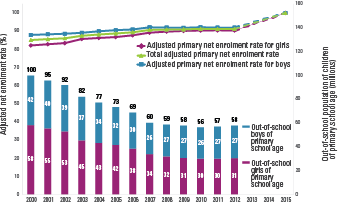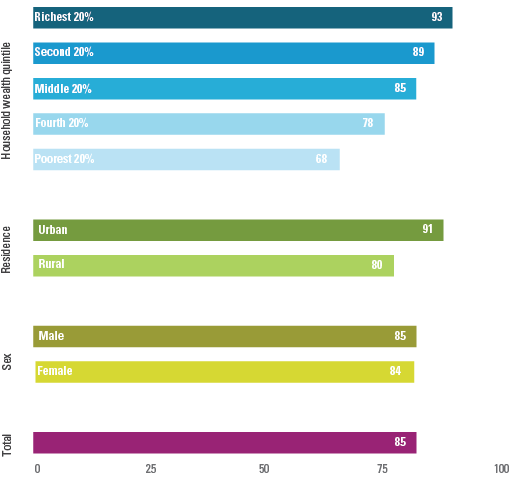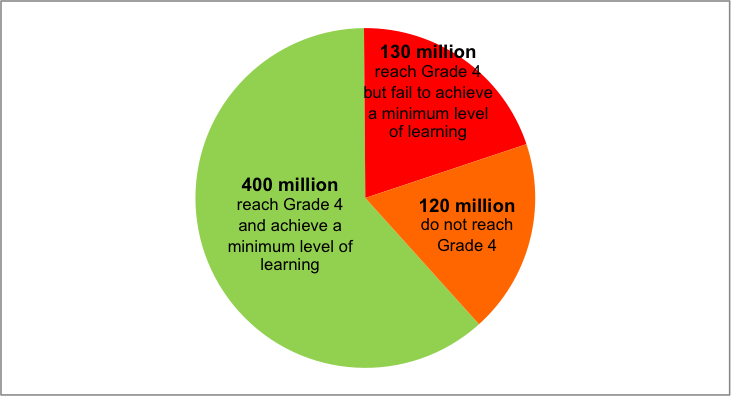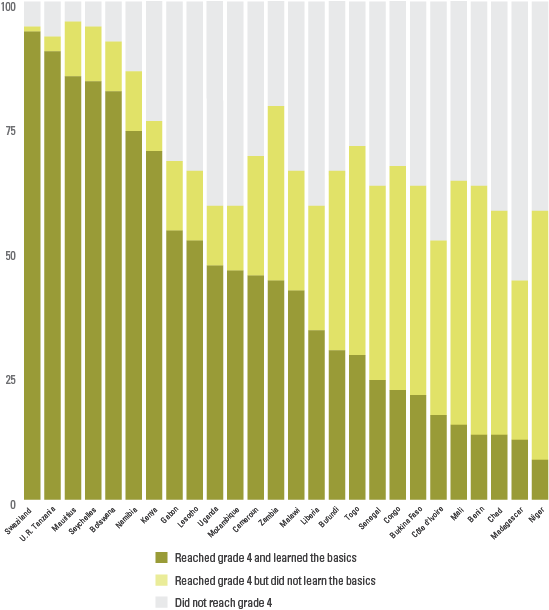Worldwide, 91 per cent of primary-school-age children were enrolled in school in 2012. However, at the current rate of progress, the MDG target for universal primary education is unlikely to be met. The challenge is most acute in West and Central Africa, where net enrolment is 73 per cent. Although the number of out-of-school children of primary school age declined globally from 100 million to 58 million between 2000 and 2012, progress has stalled since 2007.
For a full picture of children’s school participation, UNICEF uses two sources of data: enrolment data, which are based on administrative records, and attendance data from household surveys. In half of all countries, data on primary and secondary education come from more than one source. All data on primary and secondary education used by UNICEF are based on official International Standard Classifications of Education (ISCED) and may deviate somewhat from those used by country-specific school systems.
DEFINITION OF INDICATORS
Gender parity index – The ratio of female-to-male values of a given indicator. A GPI of 1 indicates parity between the sexes.
Literacy rate – Total number of literate persons in a given age group, expressed as a percentage of the total population in that age group. The adult literacy rate measures literacy among persons aged 15 years and older, and the youth literacy rate measures literacy among persons aged 15 to 24 years.
Out-of-school population – Total number of primary or lower secondary-school-age children who are not enrolled in primary (ISCED 1) or secondary (ISCED 2 and 3) education.
Pre-primary school gross enrolment ratio – Number of children enrolled in pre-primary school, regardless of age, expressed as a percentage of the total number of children of official pre-primary school age.
Primary school gross enrolment ratio – Number of children enrolled in primary school, regardless of age, expressed as a percentage of the total number of children of official primary school age.
Primary school net attendance ratio – Number of children attending primary or secondary school who are of official primary school age, expressed as a percentage of the total number of children of official primary school age. Because of the inclusion of primary-school-age children attending secondary school, this indicator can also be referred to as a primary adjusted net attendance ratio.
Primary school net enrolment ratio – Number of children enrolled in primary or secondary school who are of official primary school age, expressed as a percentage of the total number of children of official primary school age. Because of the inclusion of primary-school-age children enrolled in secondary school, this indicator can also be referred to as a primary adjusted net enrolment ratio.
Secondary school net attendance ratio – Number of children attending secondary or tertiary school who are of official secondary school age, expressed as a percentage of the total number of children of official secondary school age. Because of the inclusion of secondary-school-age children attending tertiary school, this indicator can also be referred to as a secondary adjusted net attendance ratio.
Secondary school net enrolment ratio – Number of children enrolled in secondary school who are of official secondary school age, expressed as a percentage of the total number of children of official secondary school age. Secondary net enrolment ratio does not include secondary-school-age children enrolled in tertiary education, owing to challenges in age reporting and recording at that level.
Survival rate to last primary grade – Percentage of children entering the first grade of primary school who eventually reach the last grade of primary school.
REFERENCES
- UNESCO, Education for All Global Monitoring Report 2013/14: Teaching and Learning - Achieving Quality for All, UNESCO, Paris, 2014.
- UNESCO Institute for Statistics, global databases, 2014.
- UNESCO Institute for Statistics, Global Education Digest 2012, Opportunities Lost: The impact of grade repetition and early school leaving, UIS, Montreal, 2012.
- UNICEF, The State of the World’s Children 2015: Reimagine the Future - Innovation for Every Child, UNICEF, New York, 2014.









